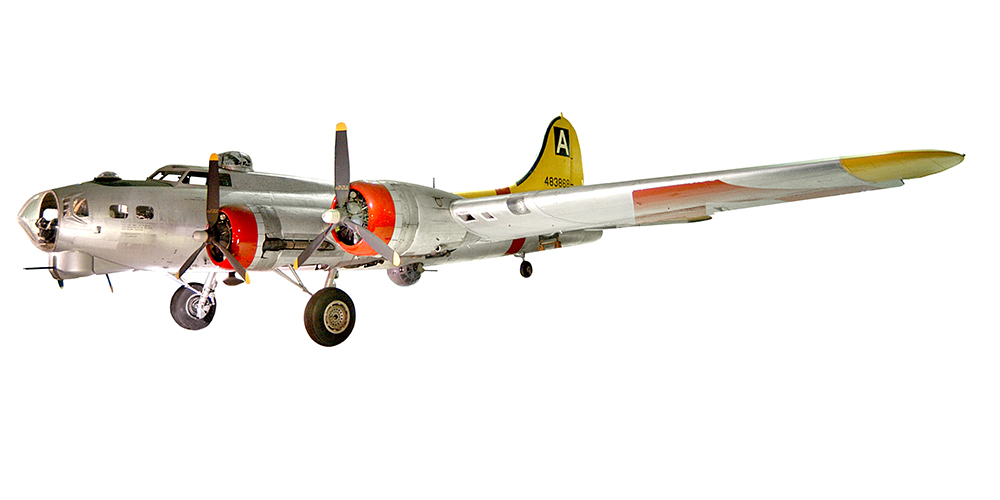Boeing B17G Fortress
| Serial No: | 77233 |
| Period: | WWII |
| Reference: | 83/A/1374 |
| Museum: | London |
| Location: | Hangar 5 |
| On Display: | Yes |
The B17 was nicknamed the Flying Fortress” because it was heavily armed and could survive and inflict heavy damage. This aircraft was the primary bomber of the U.S. Eighth Air Force in the last years of World War Two. Formations of over 850 US bombers flew over Europe in the daytime while RAF Bomber Command carried on the night offensive. This machine finished its flying career as a fire-fighting water bomber in California and flew across the Atlantic to the Museum in 1983.
The B17 together with the B24 Liberator bore the brunt of American daylight strategic bombing in the European theatre during World War Two.
In 1934 the United States Army Air Corps outlined its requirements for an off-shore anti-shipping bomber. A year later the prototype took to the air. In 1940 twenty early production B17s were released to the RAF. This enabled them to be evaluated under operational conditions but this early introduction into service was not a success.
Following an extensive redesign to increase armour and armament new versions were introduced and were widely used by the Americans both in Europe and the Pacific. A further modification programme this time to improve the bomber’s ability to repel air attacks from the front produced the B17G with its twin-gun ‘chin’ turret which you can see clearly on this example.
At the height of production Boeing’s Seattle plant alone produced a completed aircraft every ninety minutes. A total of 12731 Fortresses were manufactured of which just over two-hundred were supplied to the RAF.”






